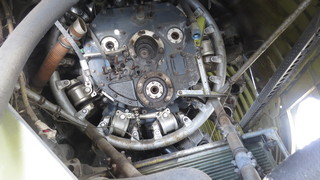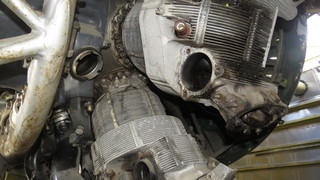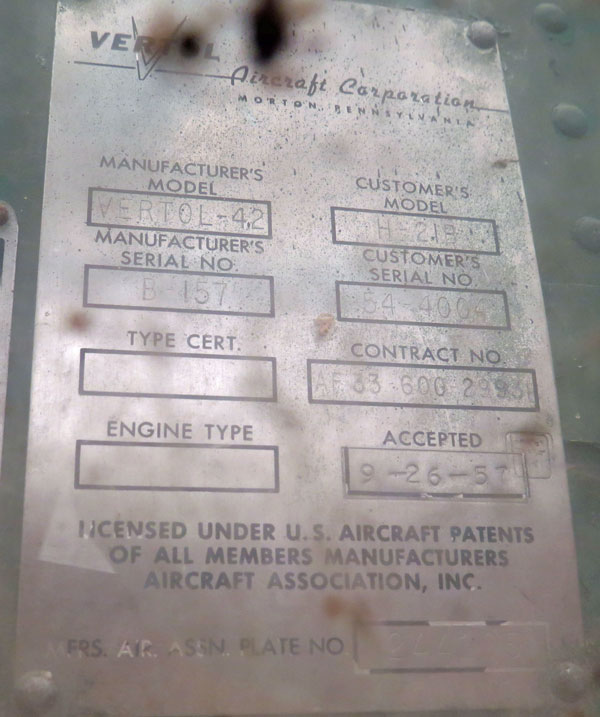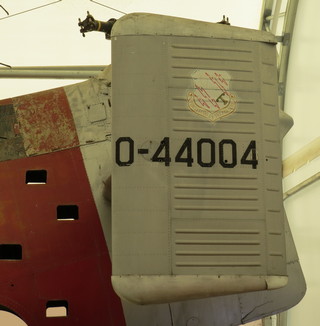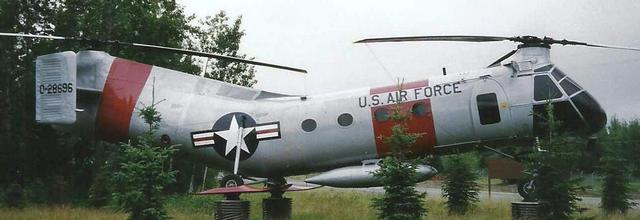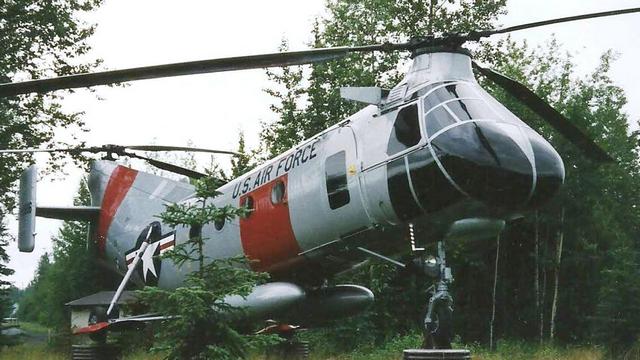1954 Piasecki H-21B
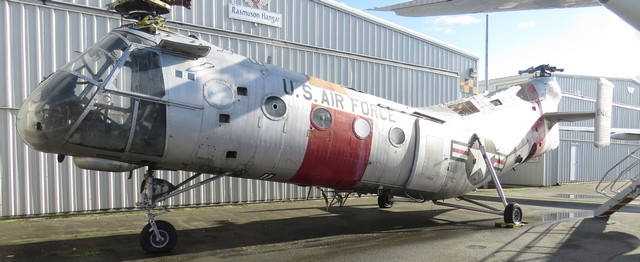
The Piasecki H-21 was also known as the “Workhorse”, “Shawnee”, or the “Flying Banana”. It was originally developed as an Arctic rescue helicopter and could operate in temperatures as low as -65 degrees F.
In 1949, Piasecki proposed the YH-21 Workhorse to the United States Air Force (USAF), which was an improved, all-metal derivative of the HRP-1. Using two tandem, fully articulated three-bladed counter-rotating rotors, the H-21 was powered by one nine-cylinder Curtis-Wright R-1820-103 Cyclone supercharged 1,150 hp (858 kW) air-cooled radial engine. After its maiden flight in April 1952, the USAF ordered 32 H-21A SAR models and 163 of the more powerful H-21B assault transport variant.
The H-21B was equipped with an uprated version of the Wright 103 engine, developing 1425 shaft horsepower (1063 kW), and featured rotor blades extended by 6 inches (152 mm). With its improved capabilities, the H-21B could carry 22 fully equipped infantrymen, or 12 stretchers, plus space for two medical attendants, in the medevac role.
With its Arctic winter capabilities, the H-21A and H-21B were put into service by both the USAF and the Royal Canadian Air Force (RCAF) to maintain and service DEW (Distant Early Warning) radar installations stretching from the Aleutian Islands and Alaska across the Canadian Arctic to Greenland and Iceland.
Piasecki H-21
| Customer’s Model: | H-21B | |
|---|---|---|
| Manufacturer’s Model: | VERTOL-42 | |
| Manufacturer’s Serial#: | B-157 | |
| Customer’s Serial#: | 54-4004 | |
| Crew: | 3–5 (Pilot, co-pilot, crew chief and one or two gunners in Vietnam) | |
| Height: | 15 ft 9 in | |
| Length: | 52 ft 6 in | |
| Rotor diameter: | 44 ft 0 in | |
| Disc area: | 3,041 ft2 | |
| Empty Weight: | 8,950 lbs | |
| Max Takeoff Weight: | 15,200 lbs | |
| Max Speed: | 127 MPH | |
| Cruise Speed: | 98 MPH | |
| Range: | 265 Mi | |
| Service Ceiling: | 9,450 feet | |
| Engine: | Wright R-1820-103 | |
| Horsepower: | 1,425 | 1063 kW |
